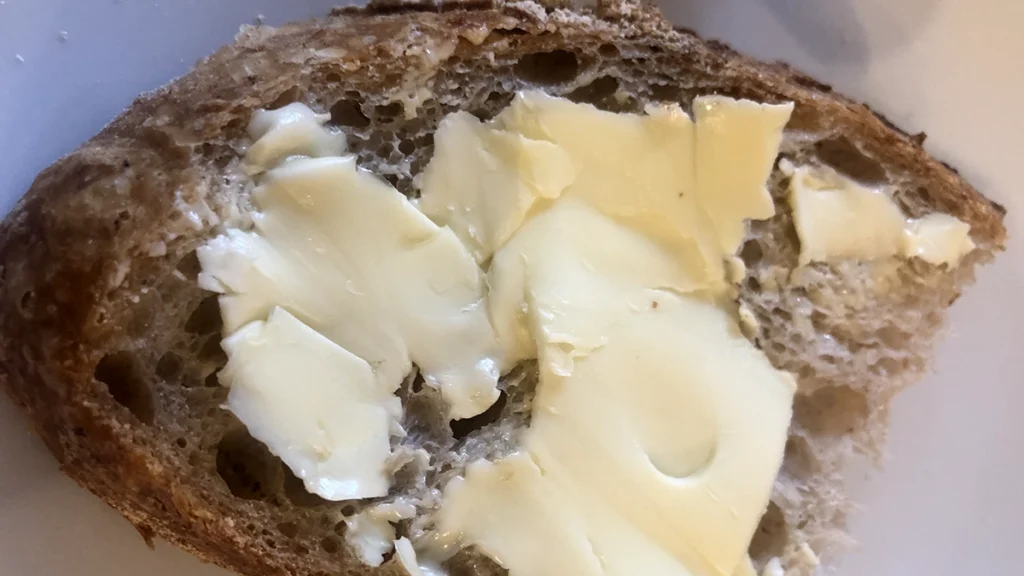The Rhythms of Sourdough
- My Sourdough Blog
-
Jul 14
- Share post

The Rhythms of Sourdough: Making Wild Yeast Work With Your Life
There’s something almost mystical about sourdough baking that intimidates many homebakers. The idea of maintaining a living culture, the long fermentation times, the seemingly rigid schedules—it all feels overwhelming. But here’s the truth I’ve discovered after years of sourdough baking: it’s not about bending your life around the bread. It’s about understanding the natural rhythms of fermentation and making them dance with your daily flow.
The Misunderstood Timeline
Most sourdough anxiety stems from a fundamental misunderstanding. Sourdough demands precise timing, but wild yeast is remarkably forgiving. Unlike commercial yeast that races through fermentation, sourdough moves at a more leisurely pace—and that’s precisely what makes it adaptable to real life.
The key insight is this: temperature controls time. A dough that might take 4 hours to bulk ferment at 78°F will take 8 hours at 65°F. Your refrigerator becomes a pause button, slowing fermentation to a crawl. This isn’t a bug in the sourdough system—it’s a feature that lets you work around job schedules, family commitments, and the unpredictable nature of daily life.
Finding Your Sourdough Rhythm
The Weekend Warrior Approach
If weekdays feel too chaotic, embrace weekend baking. Start your dough Saturday morning, let it bulk ferment while you run errands, shape it in the afternoon, and bake Sunday morning. The long, cold retard in the fridge improves flavour development, so you’re not sacrificing quality for convenience.
The Workday Integration
For those who want fresh bread during the week, consider this rhythm: mix your dough after dinner, let it bulk ferment overnight at room temperature (adjusting hydration and starter amount for a slower rise), then shape and bake in the morning. The smell of fresh bread as you start your day is worth the slight adjustment to your routine.
The Flexible Starter Schedule
Your starter doesn’t need daily attention. A healthy starter can live in the fridge for weeks with minimal care. Feed it when you plan to bake, let it peak, then use what you need and store the rest. This approach treats your starter like the resilient culture it is, not a needy pet.
Working With Natural Rhythms
Sourdough teaches you to observe and respond rather than control. Learn to read your dough’s signals—the gentle dome of proper bulk fermentation, the way properly developed gluten feels under your hands, and the subtle changes in aroma that indicate peak activity.
These skills develop over time, but they’re not mysterious. Your dough will tell you when it’s ready if you learn to listen. A poke test reveals fermentation progress. Visual cues show gluten development. Temperature tells you how fast things will move.
The Art of Adjustment
Every environment is different. Your kitchen’s temperature, humidity, and even the minerals in your water affect fermentation. Rather than following recipes unthinkingly, learn to adjust. If your kitchen runs cold, find warm spots or extend the timing. If it’s hot, use cooler water or less starter.
This isn’t about perfection—it’s about adaptation. Some of my best loaves had come from unplanned adjustments, from times when life interrupted my baking schedule, and I had to improvise.
Building Sustainable Habits
The most successful sourdough bakers I know aren’t the ones with the most rigid schedules. They’re the ones who’ve found ways to make sourdough fit seamlessly into their lives. They might bake once a week or once a month, but they do it consistently because it works with their rhythm, not against it.
Start small. Bake when you feel like it. Don’t let perfect become the enemy of good. A simple sourdough loaf that you make is infinitely better than the elaborate bread you plan but never attempt.
The Deeper Rhythm
There’s something profound about working with wild yeast that goes beyond just making bread. It connects you to a slower pace, to the ancient rhythms of fermentation that predate our hurried modern world. In a culture obsessed with instant gratification, sourdough offers the radical act of patience.
But this patience isn’t passive waiting—it’s active engagement with natural processes. You’re not just making bread; you’re participating in an ancient partnership between human creativity and microbial magic.
Making It Work
The best sourdough routine is the one you’ll follow. If you’re a morning person, start your dough the night before. If evenings work better, begin after dinner. If weekends are your only free time, embrace the slower weekend rhythm.
Your sourdough journey doesn’t have to look like anyone else’s. The baker who makes perfect loaves daily and the one who bakes monthly can both find joy and satisfaction in their practice. The key is finding what works for your life, your schedule, and your goals.
Sourdough doesn’t demand perfection—it rewards consistency and patience. It teaches you that some things can’t be rushed and that working with natural rhythms often produces better results than fighting against them.
In the end, sourdough baking isn’t about mastering a technique—it’s about developing a relationship. Like any good relationship, it requires understanding, flexibility, and mutual respect. Give it these things, and it will reward you with not just delicious bread but a deeper connection to the fundamental rhythms of life itself.
The wild yeast is waiting. Your schedule is what it is. The magic happens when you stop trying to change one to fit the other and instead find the harmony between them.
